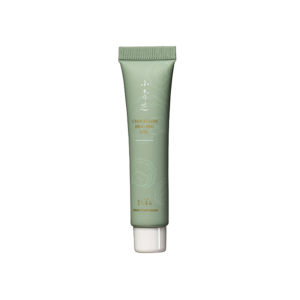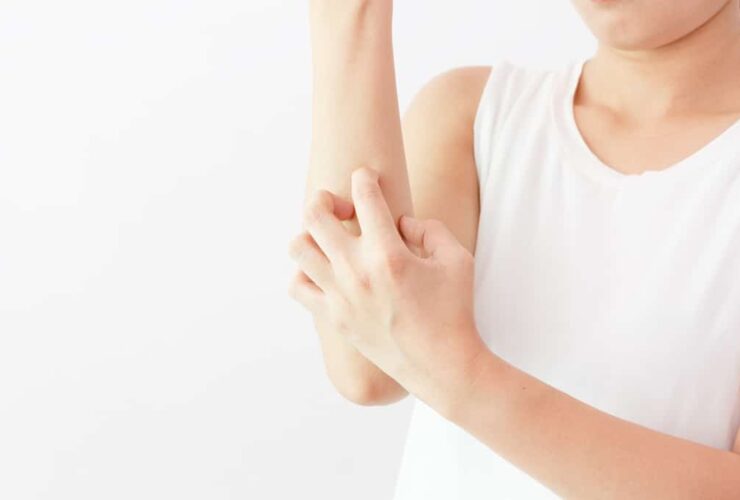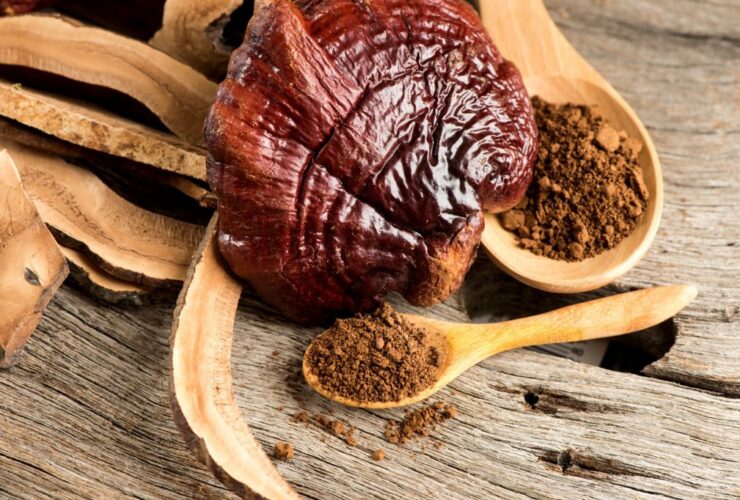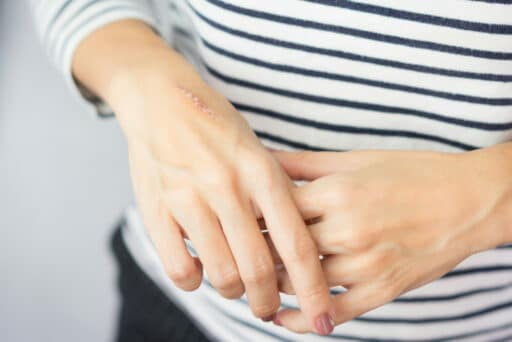
How to Deal with Scars on Wounds? Choose the Right Scar Ointment for Minimizing and Lightening Scars
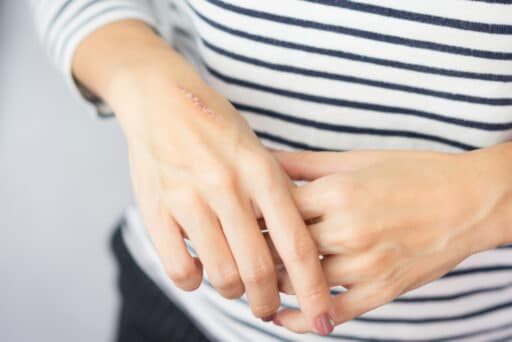
During the course of growing up, it is inevitable to encounter situations such as falls resulting in injuries, burns, or undergoing surgical procedures. When the skin is wounded, it often leaves scars on the body. Scars can vary in size, not only posing aesthetic concerns but also potentially affecting joint flexibility if scar contracture occurs. Therefore, dealing with troublesome marks and achieving the lightening of scars on the body has become a significant concern for many.
Today, we want to guide you through understanding what scars are, establishing a basic knowledge of skin scars, introducing common types of scars, and sharing recommendations for scar gels and scar ointments for achieving scar lightening. Through the correct skin care methods, we aim to provide the best protection for damaged skin.
Causes of Scars on Wounds
Our skin consists of three layers: the epidermis, dermis, and subcutaneous tissue. Generally, if a skin wound is limited to the epidermis or dermis, it will heal within approximately one to two weeks and is less likely to leave noticeable scars. However, if the wound extends into the subcutaneous tissue beneath the dermis, it may result in scar formation.
In other words, scar formation is the outcome of the healing process of a skin wound. Under normal circumstances, collagen fibers in the skin tissue should be arranged parallel to the skin surface. However, when the body initiates the repair of an injured area, there is an increase in collagen production and restructuring, leading to a disorganized arrangement of collagen fibers. This can cause the formation of scars with a different texture than the original skin, potentially resulting in raised scars.
It is generally recommended to use scar gels or scar ointments as early as possible after wound healing, depending on the type of wound, to prevent scar formation. Seeking advice from a dermatologist for scar treatment recommendations can also be beneficial in achieving the lightening of scars on the body.
Three Common Types of Scars
1. Superficial Scars
Superficial scars only affect the epidermis and the shallow layer of the dermis, commonly seen in abrasions, insect bites, etc. They can result in changes in skin pigmentation, such as pigmented deposition. Generally, superficial scars tend to gradually fade with time. Additionally, they can be removed more swiftly by applying scar gels and scar ointments.
2. Atrophic Scars
Atrophic scars, also known as concave scars, are commonly seen after the healing of conditions like acne and chickenpox. This type of scar is primarily caused by inflammation during the repair process or manual squeezing, leading to the destruction of collagen and abnormal collapse of the dermis. This results in the pulling down of the skin, creating a concave or atrophic appearance.
3. Hypertrophic Scars
If excessive collagen is produced during the wound healing process, it can result in the formation of hypertrophic scars, characterized by a red appearance and raised surface. Hypertrophic scars bear a resemblance to the appearance of ‘keloids,’ and both are related to one’s body constitution, commonly occurring in areas of skin tension such as the shoulders and upper arms.
Hypertrophic scars exhibit features of thickening and hardening, limited to the original area of the wound, and tend to gradually decrease in size over time. In contrast, keloids may spread to the surrounding areas, displaying redness, irregular elevations, and swelling. Medical interventions are often recommended to assist in scar lightening for keloids.
Four Recommended Methods to Lighten Scars
After establishing a basic understanding of body scars, we have compiled below recommended care methods for scar lightening. During the wound healing period, it is advised to pay extra attention to skin care and incorporate the following four methods, which can help you ease concerns related to scars on the body.
1. Sun Protection Measures
If exposed to ultraviolet radiation for an extended period, it is easy for skin pigmentation to occur, making scars more noticeable. Therefore, the most fundamental protective measure is to practice sun protection and regularly apply sunscreen products. When going outdoors, wearing long-sleeved clothing, pants, and a hat is also advisable.
2. Consumption of Foods Rich in Vitamin A
Vitamin A is crucial to the healing of wounds and the delay of scar formation. Therefore, it is advisable to regularly consume fruits and vegetables rich in vitamin A, such as spinach, apples, tomatoes, and others. Additionally, when it comes to food intake, it is recommended to avoid ‘photosensitive foods’ such as celery, lemons, papaya, etc. These foods can trigger photosensitive reactions, activating melanocytes in the skin.
3. Minimizing Irritation on Wounds
During the wound healing phase, besides correctly caring for the wound to reduce the probability of scar formation, it is important to avoid scratching, slapping, friction from clothing, or washing with hot water after scars have formed. This helps minimize excessive irritation, preventing the scars from deepening or expanding further.
4. Utilize Scar Ointment or Gel during Daily Skin Care
In the daily care of scars, you can apply an appropriate amount of scar ointment or gel recommended by a doctor or pharmacist to the affected area. This can effectively help reduce redness, alleviate itching, and gentrify the appearance of scars, achieving the purpose of scar lightening on the body.
Cyan Reishi Advanced Repair Gel for Scar Lightening and Reduction
Striving to incorporate the founding principle of “Wellness through Circle of Life” into everyday life, Sheng Yuan Herbs is not only dedicated to sourcing premium herbal formulas in the world but also integrating traditional Chinese medicinal wisdom with modern medical innovation. Through this approach, we bring forth a concept of natural well-being to assist many individuals troubled by skin issues.
We choose the mild herbal ingredient “Cyan Reishi” and combine it with the reparative effects of “GMI protein” to create a versatile skincare solution which is suitable for various skin conditions, safe for use by pregnant women and children. This all-purpose solution, Cyan Reishi Advanced Repair Gel, can greatly help to lighten body scars.
In addition, Cyan Reishi Advanced Repair Gel features a fluid and watery gel texture that is easy to spread and apply. It can be used before makeup application or along with other skincare products. Cyan Reishi Advanced Repair Gel also enhances skin absorption, establishing a natural protective barrier for the skin. It effectively targets acne scars and body scars, reducing the dullness caused by scar pigmentation. With this product, you can care for scars more efficiently and restore your skin to the previous state.
Through the information provided, you should now have a deeper understanding of scar types and recommended methods for scar lightening. Healing wounds and lightening body scars is not a process that happens overnight; it requires consistent and proper care tailored to different scar types. By finding the right scar ointment or scar gel that meets your needs, you can shorten the repair period and achieve the desired result of scar lightening!
-
 Cyan Reishi Healing Gel$8.99
Cyan Reishi Healing Gel$8.99



